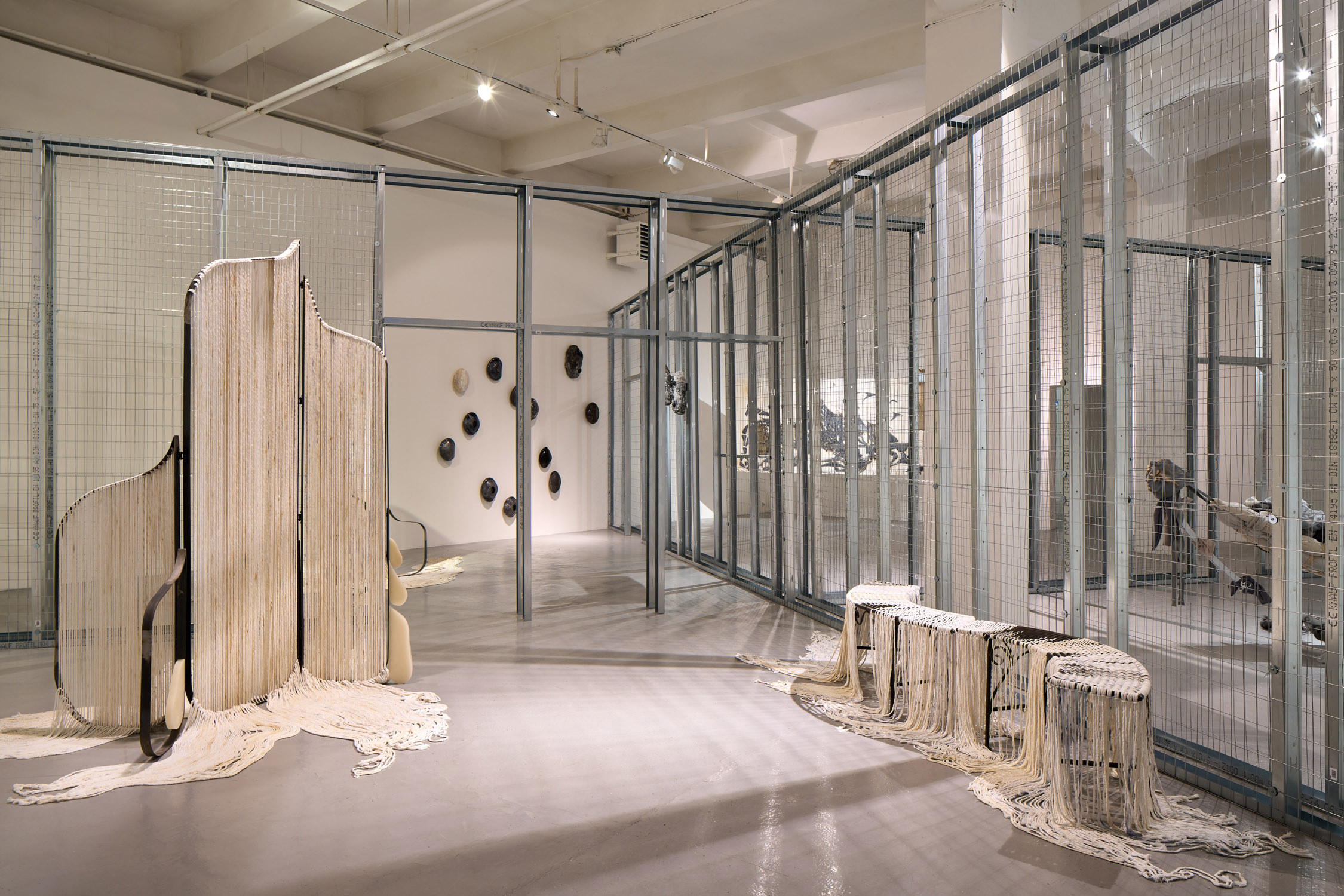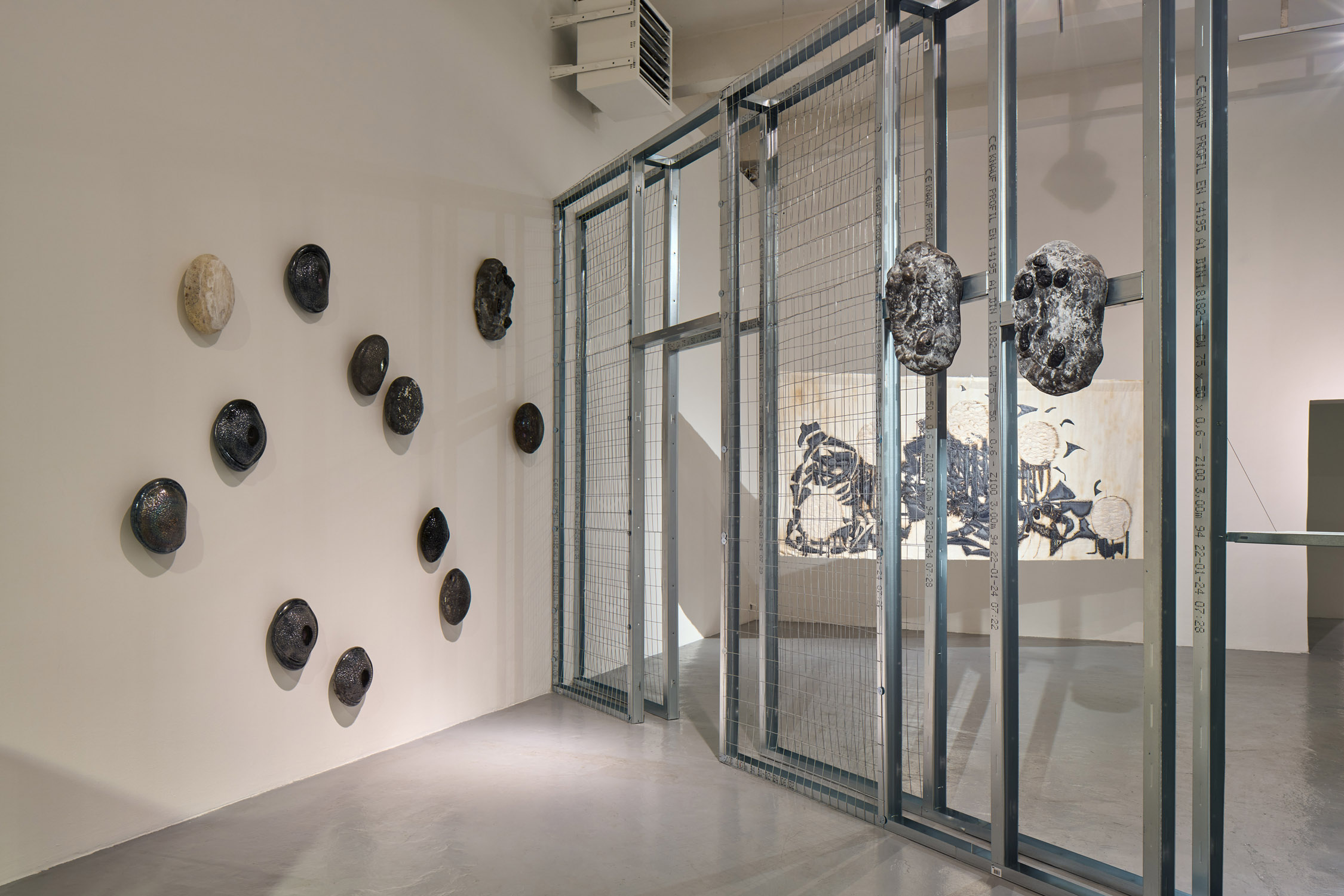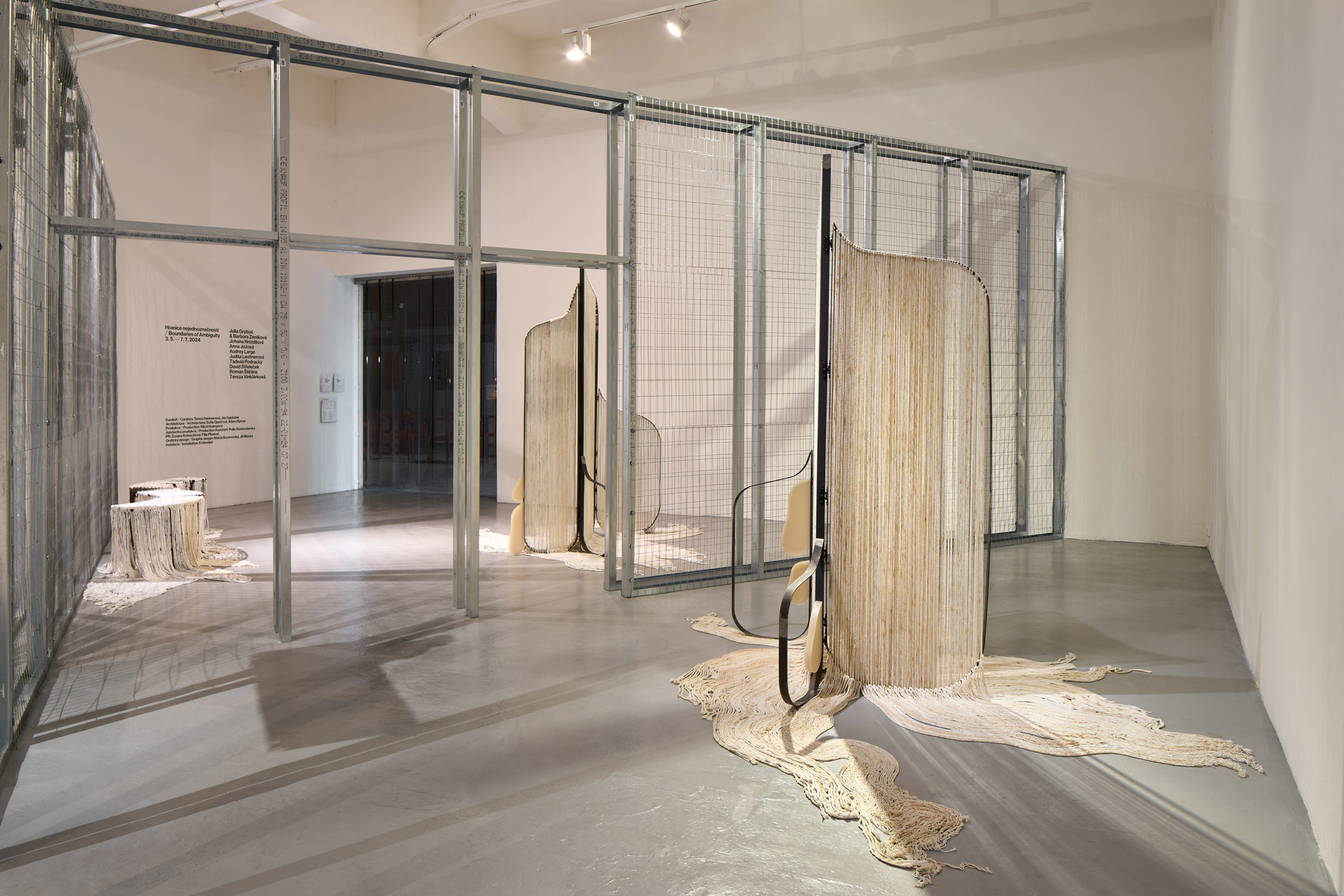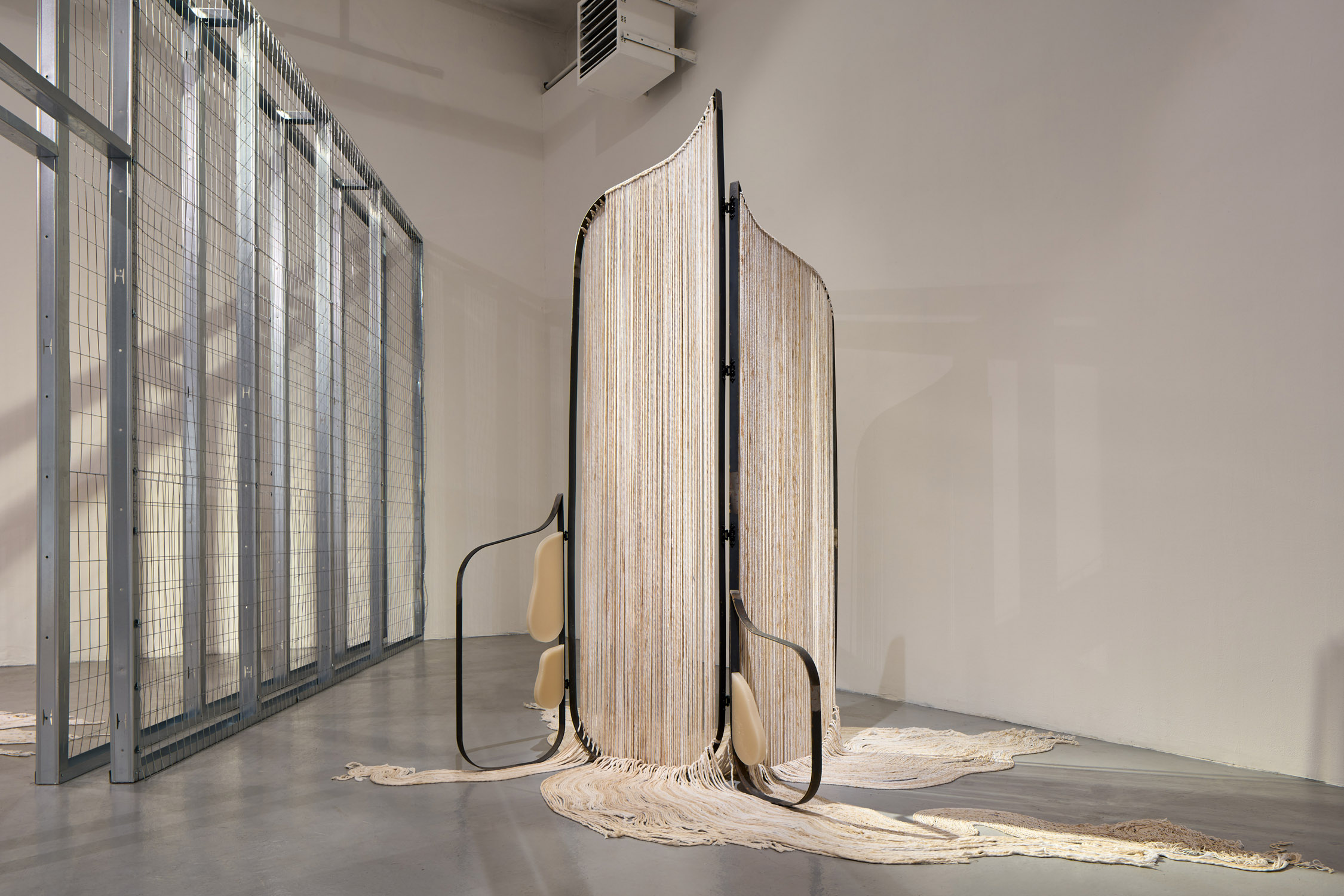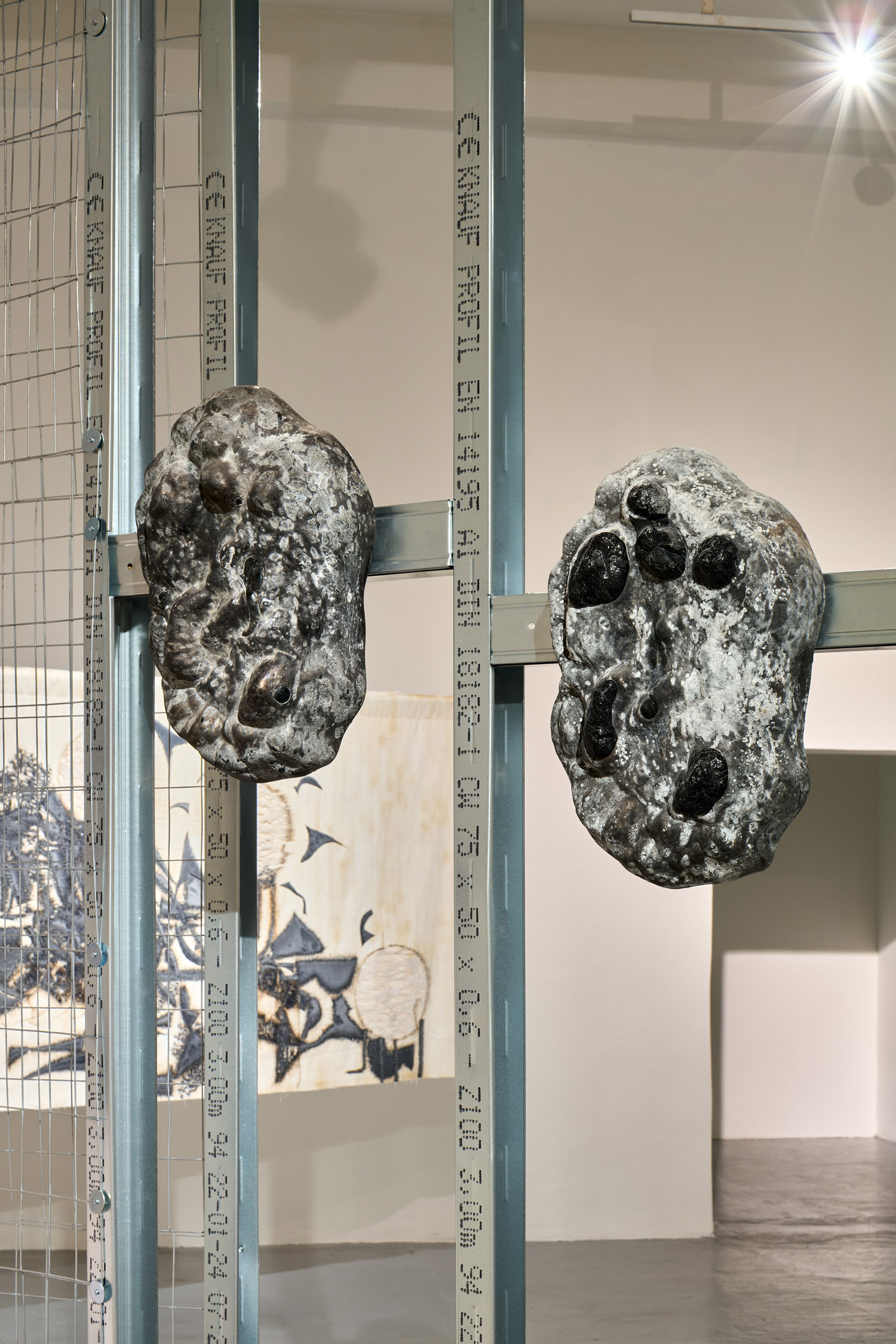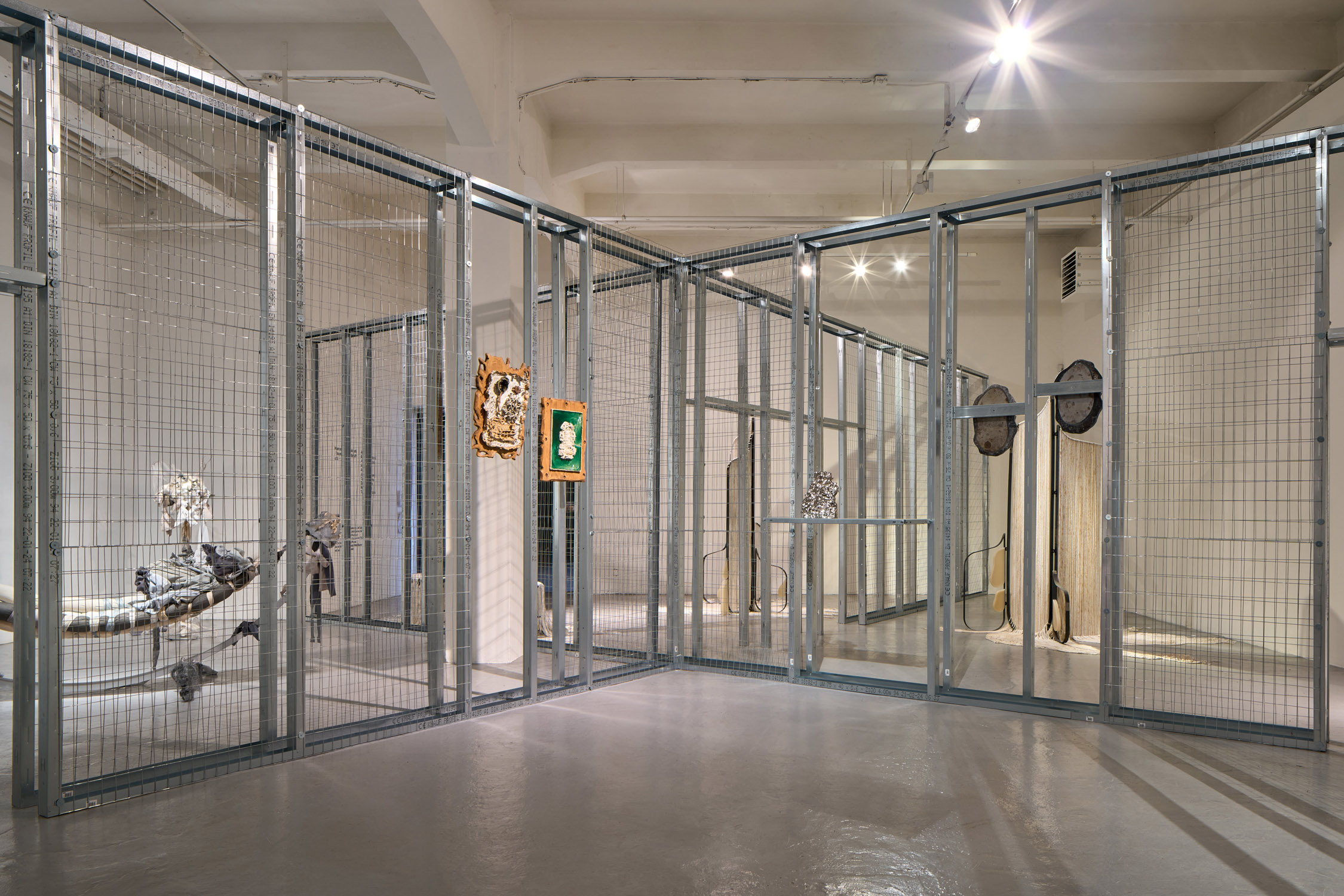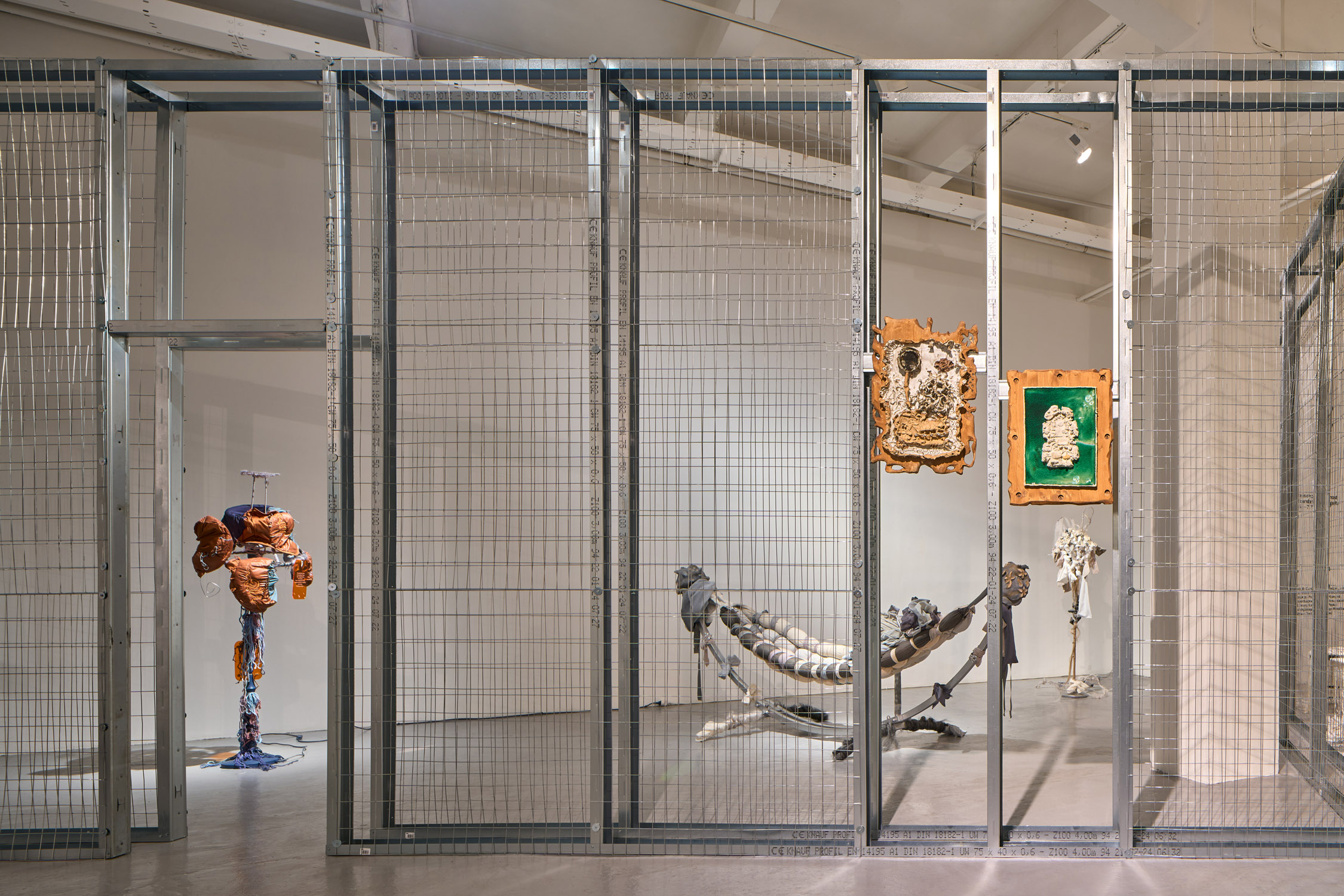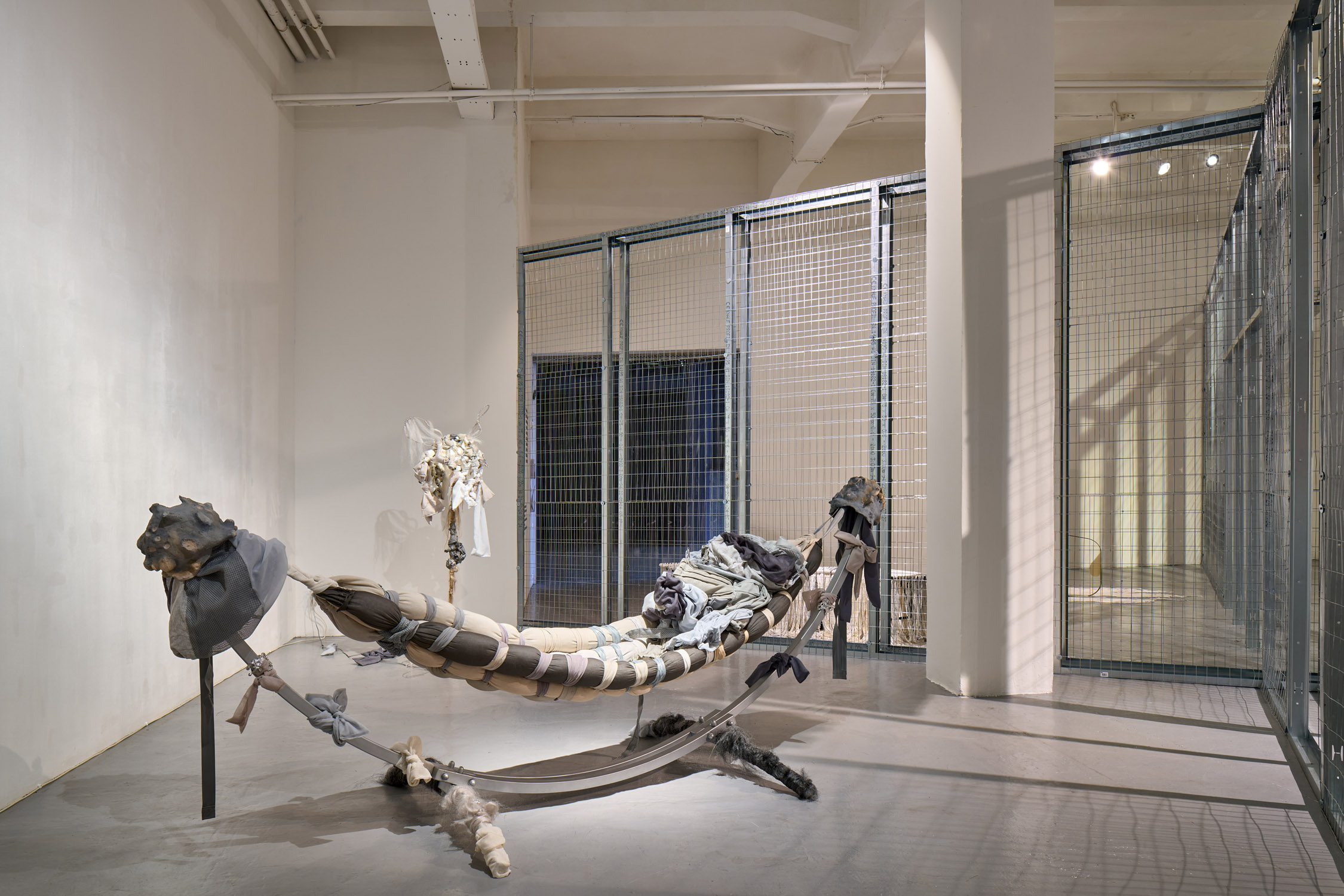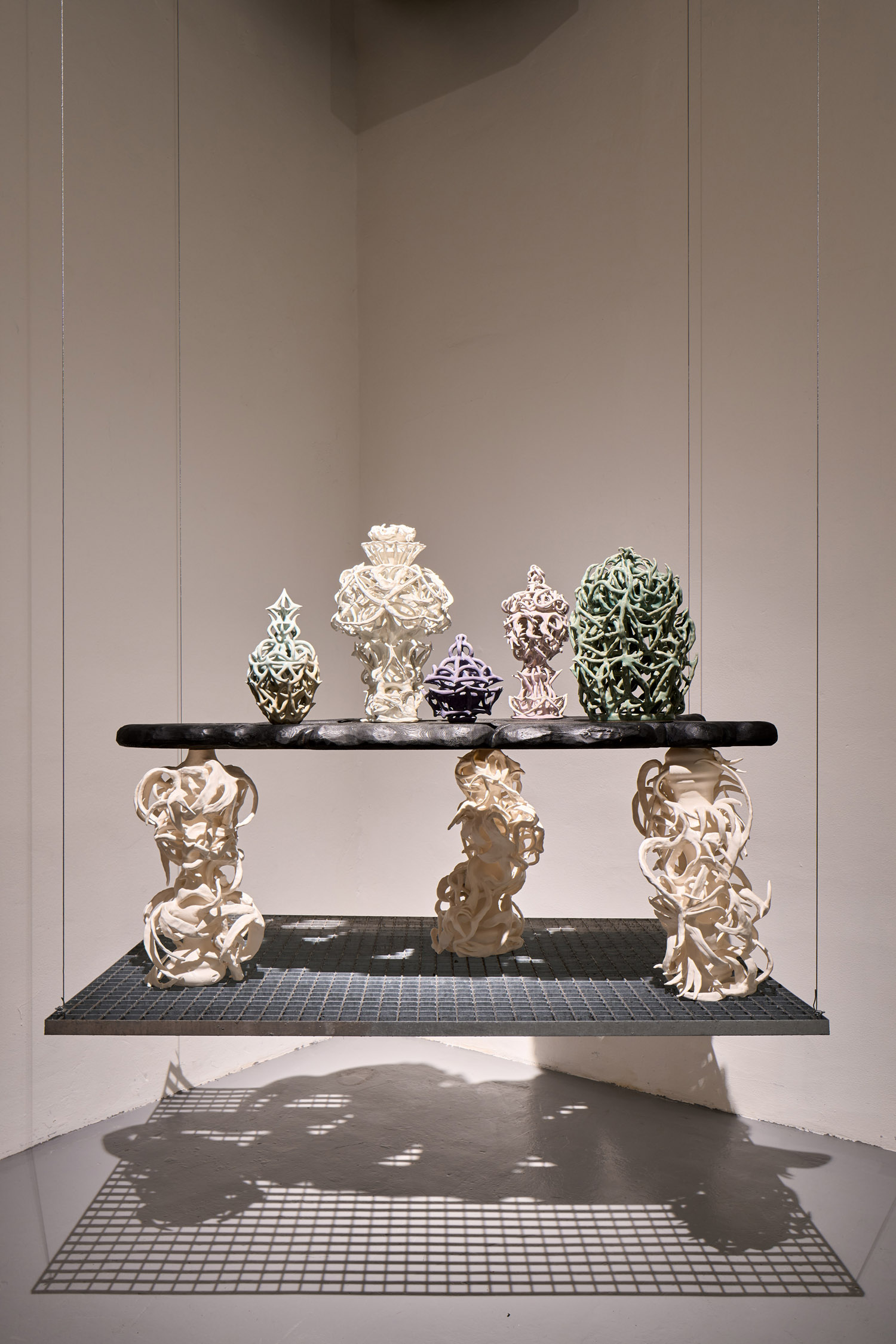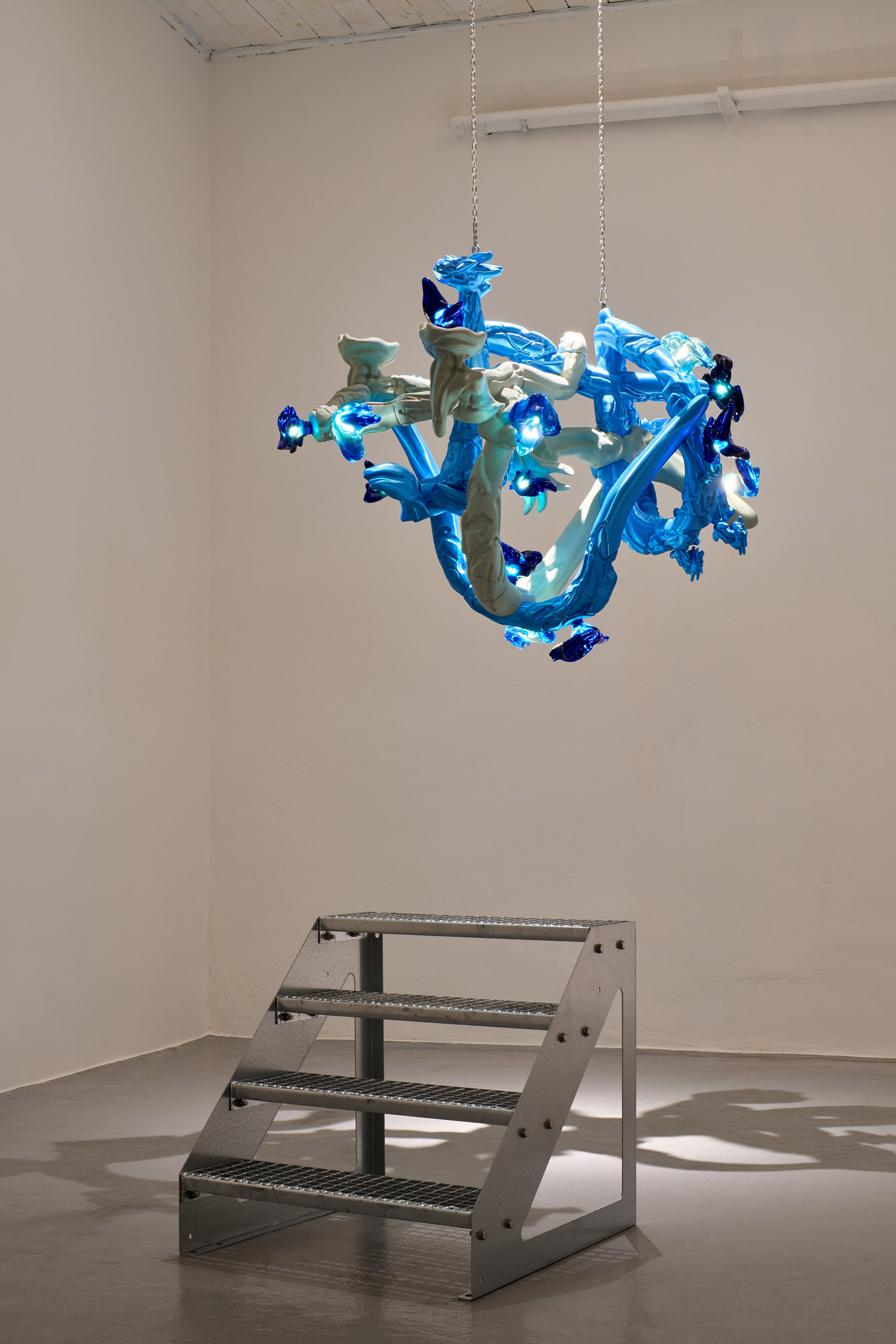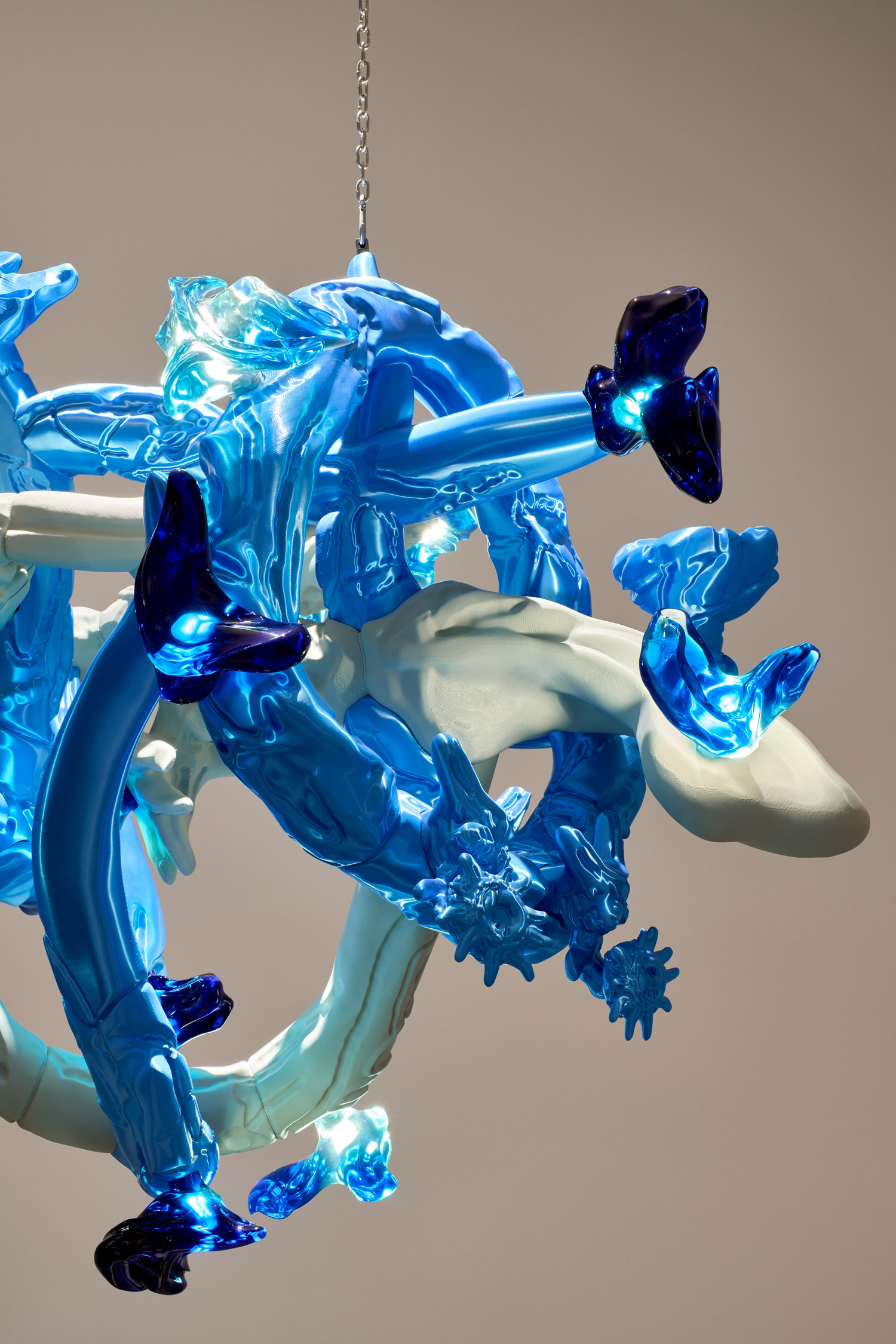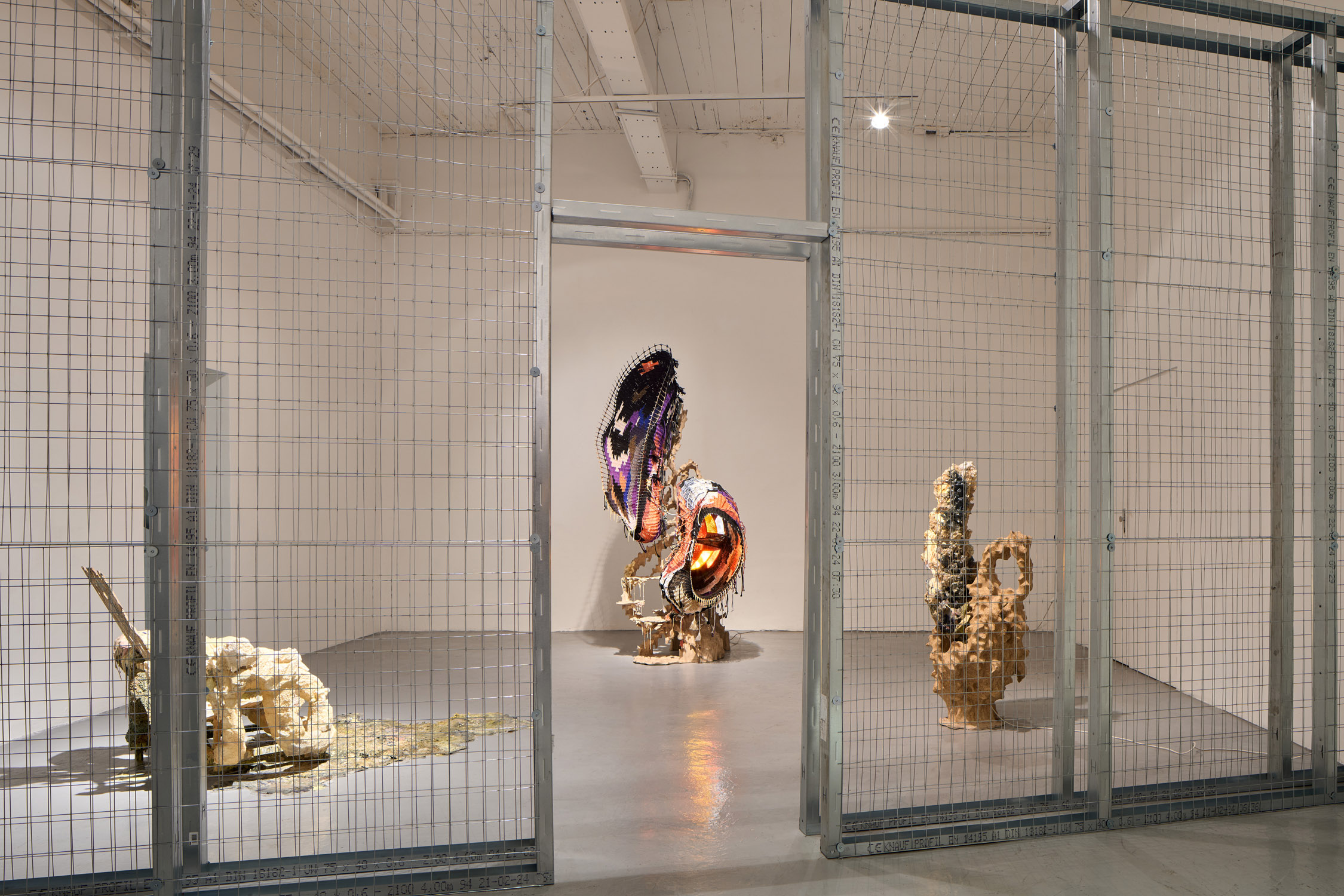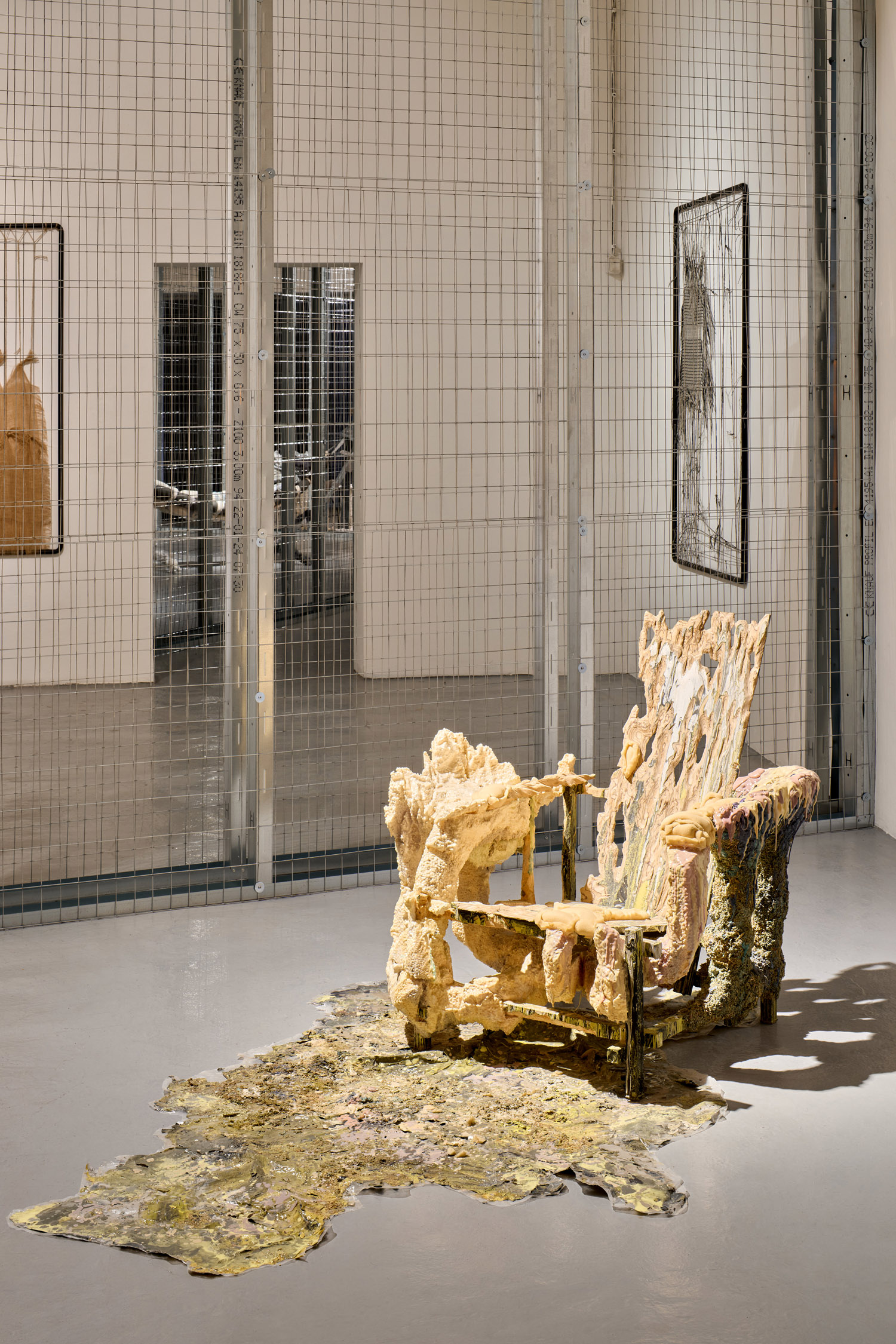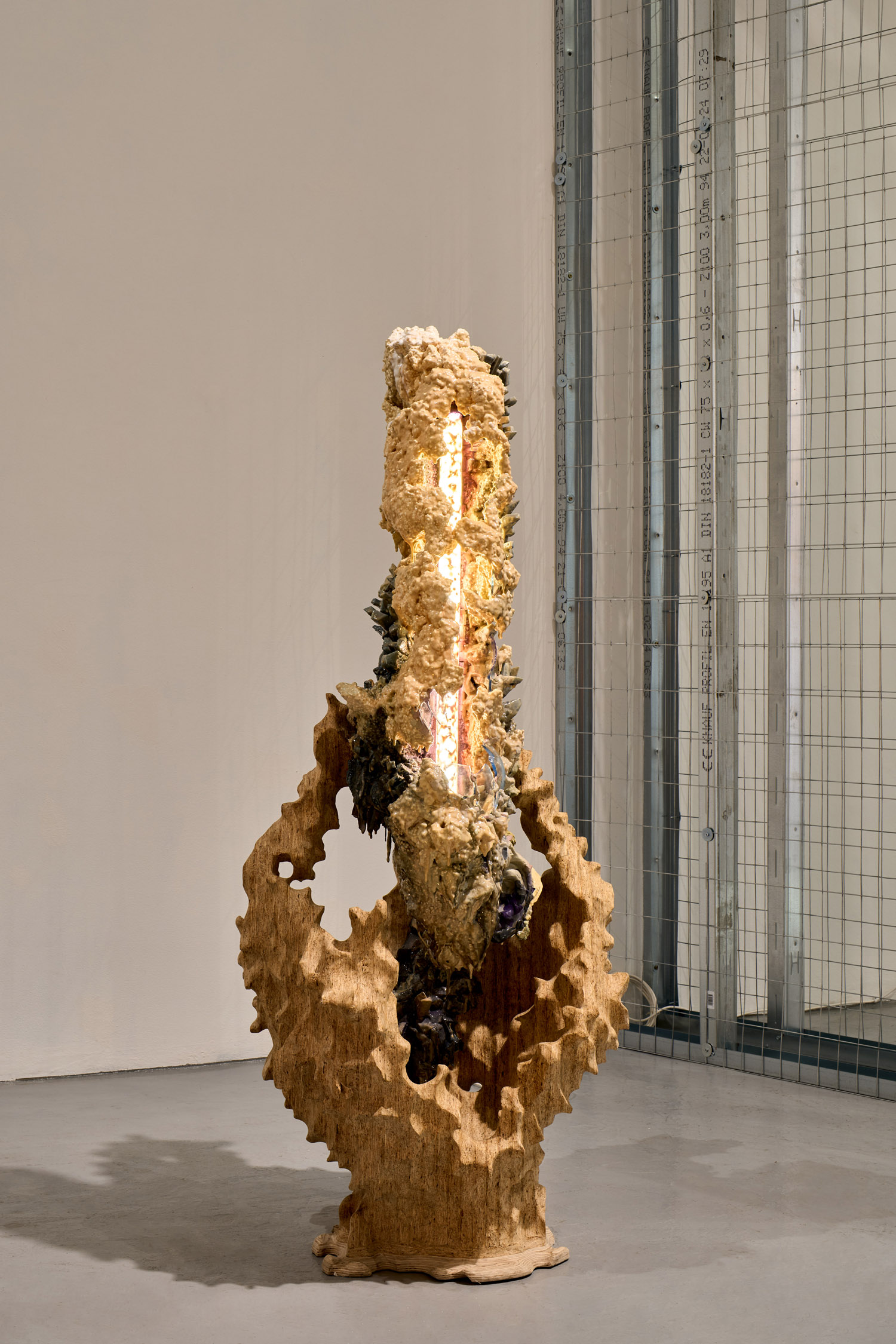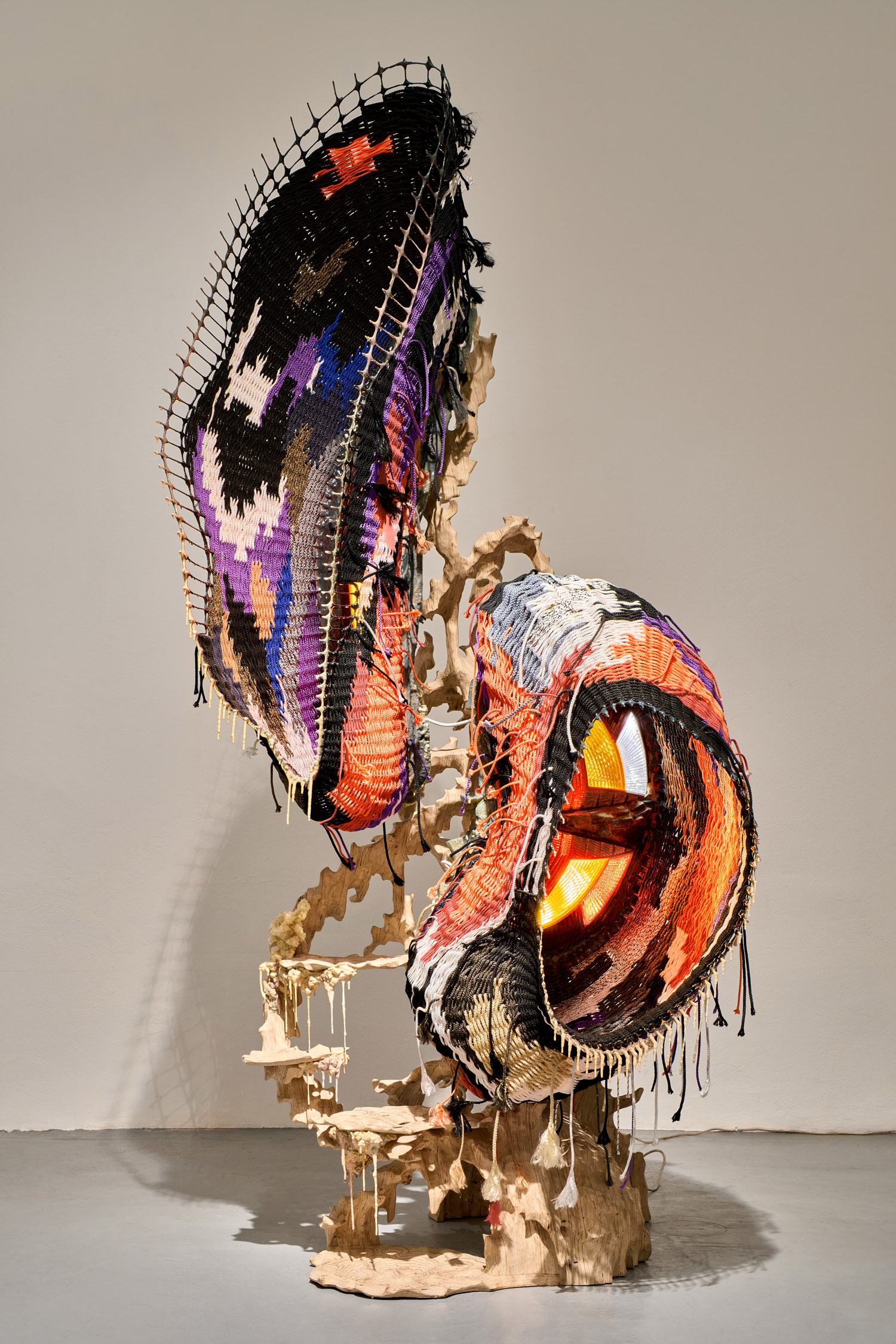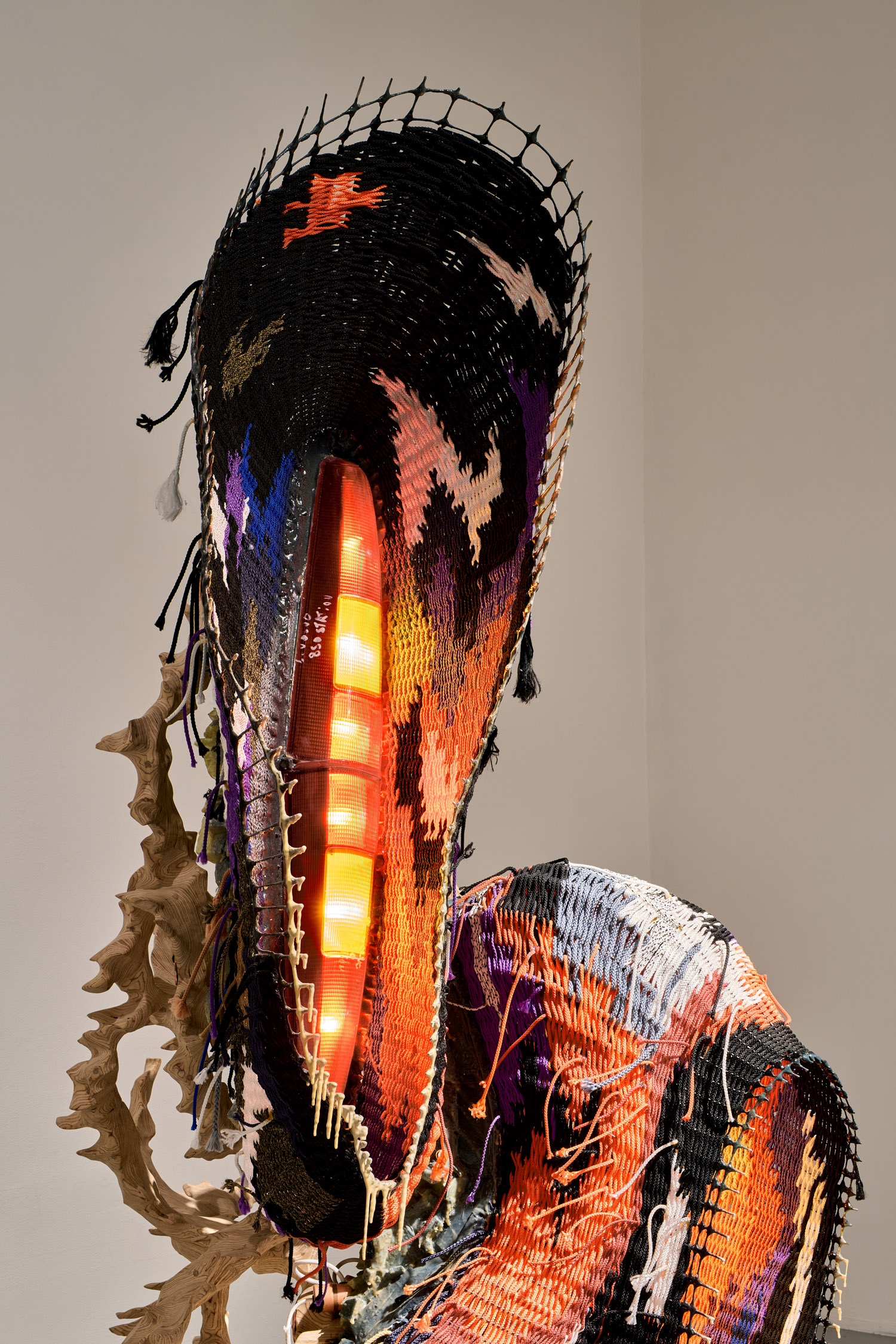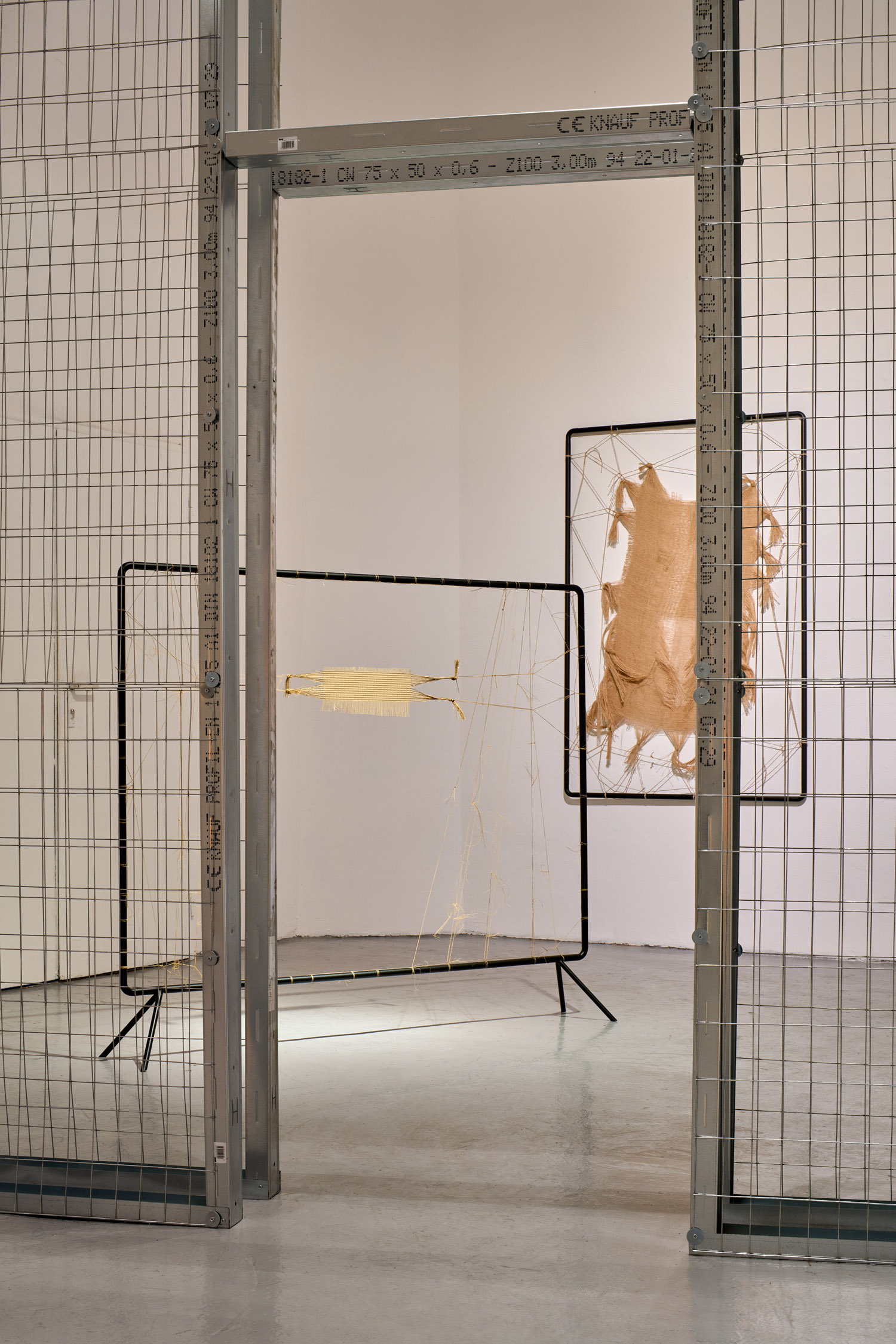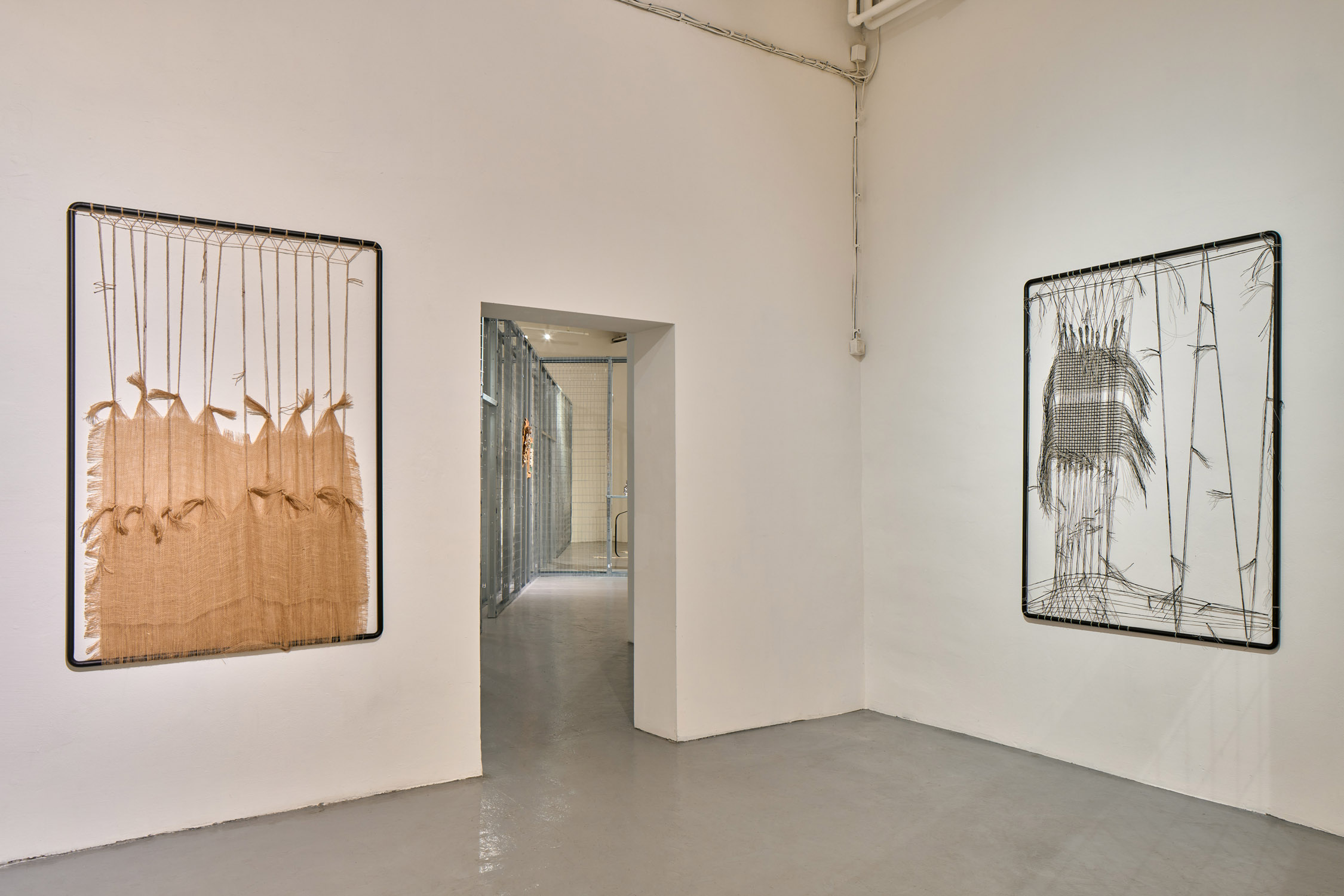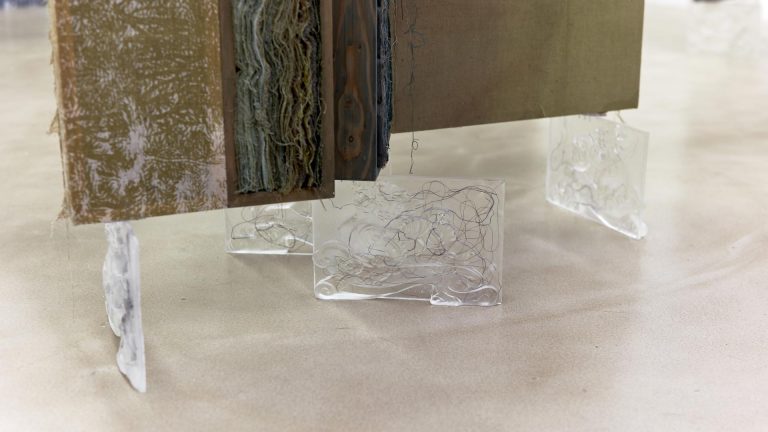Artists: Julia Gryboś & Barbora Zentková, Johana Hnízdilová, Anna Jožová, Audrey Large, Judita Levitnerová, Tadeáš Podracký, David Střeleček, Roman Štětina, Tereza Vinklárková
Exhibition title: Boundaries of Ambiguity
Curated by: Ján Gajdušek, Tereza Havlovicová
Venue: MeetFactory, Prague, The Czech Republic
Date: May 3 – July 7, 2024
Photography: ©Jan Kolský / images copyright and courtesy of the artist and MeetFactory, Prague
The intent of the Boundaries of Ambiguity exhibition at the MeetFactory Gallery is to look beyond the blurred boundaries of free and applied art, whose fusion is increasingly natural today. Artists who used to be representatives of clearly defined categories (painting, sculpture, design, etc.) are considering their work in a much broader field of social, material and spatial relations. This inclination towards intermediality has also long been evident in art colleges, which are slowly abandoning the strict guidance of their students towards liberal or applied art and instead encouraging them to be interdisciplinary.
Our aim is to enable visitors to encounter the works of ten artists whose creative balance on this borderline raises many questions. Is there a connection to technological progress and a desire for a certain reverse movement – that is, a return to craftsmanship, materiality, and the actual physical experience of making and perceiving these objects – in contrast to the omnipresent reproduction, digitalization, and depersonalization? Is one of the reasons for the intermingling of artistic disciplines the organic visuality of growth, fluidity of natural forms and non-human entities that pervades the contemporary art scene in the Western world? We can also ask where to place these works that stand at the boundaries of forms, and in what contexts is to exhibit and preserve them in the future. Also, are exhibition and collection institutions responding to this formal blurriness? The exhibition has no ambition to present explicit answers to these questions; the search for them is deliberately left to the visitor himself, who also subjectively chooses the angle through which to view the exhibited works and their context.
The architecture of the exhibition, like the works themselves, can appear ambivalent. Here, too, viewers are confronted with the choice of whether they choose to perceive it as a disassembled interior with skeletal walls and randomly placed objects that are still waiting for their proper destination, as the depository of a museum or gallery with a grid of shelves and walls for the preservation and protection of the artworks, or as the still unfinished construction of the architecture of the future exhibition.
The screens and benches by the artist duo Julia Gryboś & Barbora Zentková combine the material of textile fibres and iron structures. The hand-spinning of the finely coloured yarns requires hours and days of patient concentration, but brings a different kind of perception of the passage of time that turns this activity into a sort of meditation. The artistic duo’s solo exhibitions are usually combined with performative musical events, which, in accordance with the nature of the creative process, escalate very slowly to the point of physical exhaustion of the musician/performer. This results in an intense mixing of image, sound and physical act conveyed to the viewer. In general, the artists’ work addresses the pressure on the individual in contemporary capitalist society, chronic collective fatigue and the different conception of craftsmanship as a meditative and therapeutic component.
Audrey Large experiments with materialized digital images and a consistent questioning of how the human eye can perceive materiality. The visuality of 3D models created through graphics software can only be experienced through the screen of the digital medium/device. Audrey Large, however, brings this fictionality of digital surfaces into the real world, and her objects, completely printed on 3D printers, appear surreal at first glance, as if they have accidentally stepped out of the digital into our world, with all the visual aspects inherent only in digital models locked in the renderings of 3D programs.
Through his works, Tadeáš Podracký invites us to rethink the perception of ordinary objects or materials by reinterpreting the categories into which they are placed on the basis of their historical development. His work is always preceded by a study of the art historical context of the transformation of the used forms, materials, etc. He deals with the speculative question of what has influenced the historical development of a given object and what this object or tool would have looked like if a certain historical transformation of human needs and attitudes had happened differently. Another content that he inserts into his objects through the technique of extreme craftsmanship is the connection of the work to the body of its creator and how this physicality is reflected in its content.
In 2021, for an exhibition at the Holešovická Šachta gallery, Roman Štětina created a series of objects based on the basic elements of an interior – a screen, a chair, a chaise longue and a painting – thematising, through his work with hand-braided jute fibres, the metaphorical connection of the whole and all its parts on a wider level. MeetFactory is now showing works from an upcoming series where the artist elaborates on the theme of acoustic patterns. The inflated, regular grid of the fabric (originating, for example, from the from a Marshall combo) is untangled from its centre towards the edges, loosening the original system and inviting reflection on rhythm, its composition, resonance and disruption of order within the whole.
Tereza Vinklárková’s so called soft sculptures are made of recycled textiles and are usually exhibited as part of a composite, relaxing and therapeutic scene, which the visitor enters to take a break from all the negative effects of the contemporary world. Capitalism, the colonial legacy, the patriarchal setting of society or the ecological crisis are just some of the processes of contemporary Western society that the artist is taking a stand against and through her objects she creates a safe space in which it is possible to at least for a while stop outside the negative impact of these influences. In the context of her thinking in the context of the created scene, it is not surprising that the focus of her work also lies in the creation of video art.
